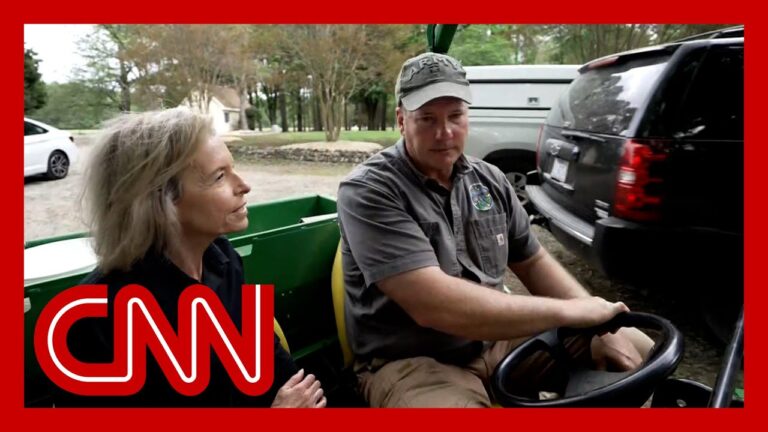Video at the bottom!
In the heart of Linden, North Carolina, Secret Garden Bees, a honey farm run by Farmer Jim Hartman, faces the dual challenges of fluctuating honey production and rising costs due to recent tariffs. Jim, a longtime Republican who voted for Donald Trump, is grappling with financial pressures as he watches the economic landscape change rapidly. His goal of harvesting 100 pounds of honey per hive annually is now clouded by costs that have surged, particularly in packaging imported from countries like Taiwan and Portugal.
Jim reflects on the impact of his decisions, pondering whether he should have considered other political options when voting. The tariffs imposed by Trump have significantly affected his business model, especially as he seeks to replenish old equipment and manage his workforce. The tariffs that the government instituted have raised costs dramatically, leading Jim to delay repairs and expansions that he previously intended.
Meanwhile, he notes that the USDA’s cuts to programs that previously supported local farmers—such as honey sales to schools and food banks—have real consequences, accounting for a staggering 50% of his revenue. He worries that as honey prices rise, consumer spending might plummet, as those already struggling to afford fresh produce will be hurt the most.
In contrast, some local supporters applaud the tariffs as a means to rectify long-standing trade imbalances, believing that it is necessary to pressure other countries to play fair. However, this perspective stands in stark contrast to Jim’s reality, as he explains the volatility in pricing and the uncertainty in the market.
The broader implications of these trade policies are also deeply felt by other local farmers, such as Scott Metzger, a soybean farmer in Ohio. With China being a major market for American soybeans, the new tariffs create alarm, adding to the existing pressures from a tight farm economy. Farmers express concern about the potential long-term repercussions on their businesses and the next generation’s willingness to continue farming.
Scott’s experiences encapsulate a growing sense of urgency among farmers facing an uncertain future due to rapid policy changes and a struggling agricultural sector. He urges the administration to work swiftly to resolve the issues surrounding tariffs, hoping for negotiations that bring positive changes and much-needed stability to the farming industry.
Ultimately, as both Jim and Scott’s stories illustrate, the consequences of tariff policies extend well beyond individual farms, affecting local economies and communities reliant on agricultural prosperity. The ripple effect touches everyone when the farm economy falters, creating an array of challenges for farmers and consumers alike.


